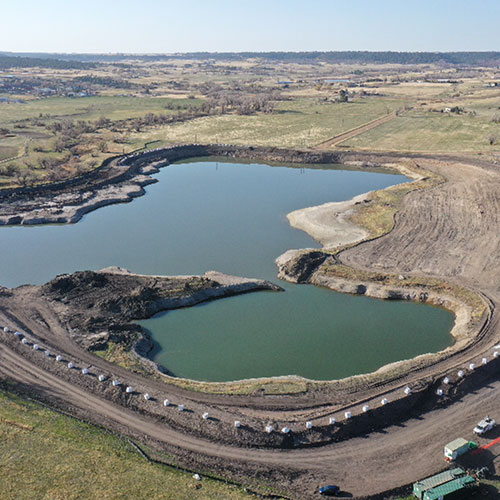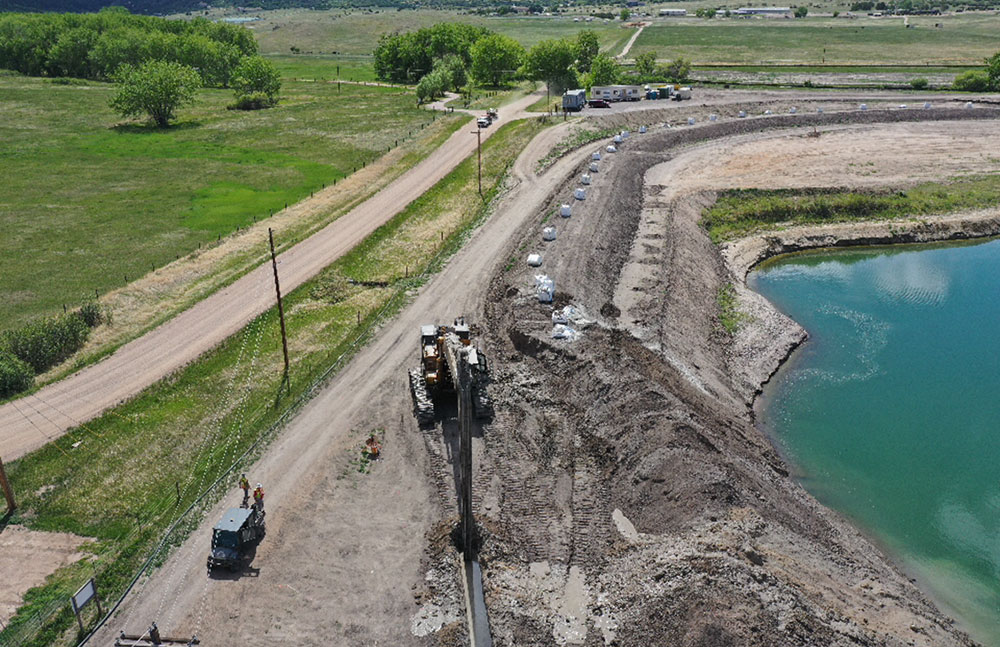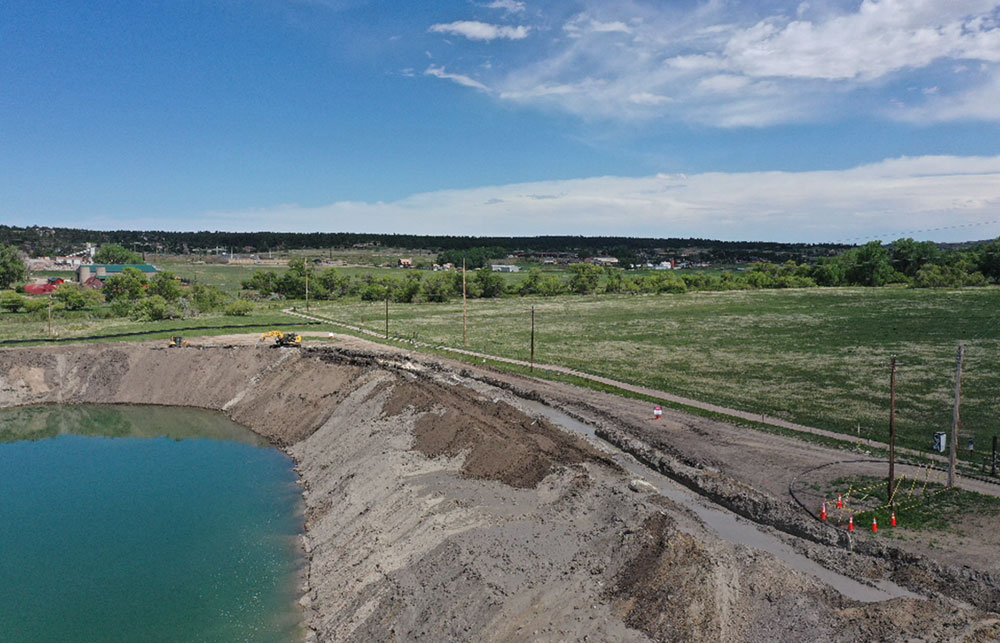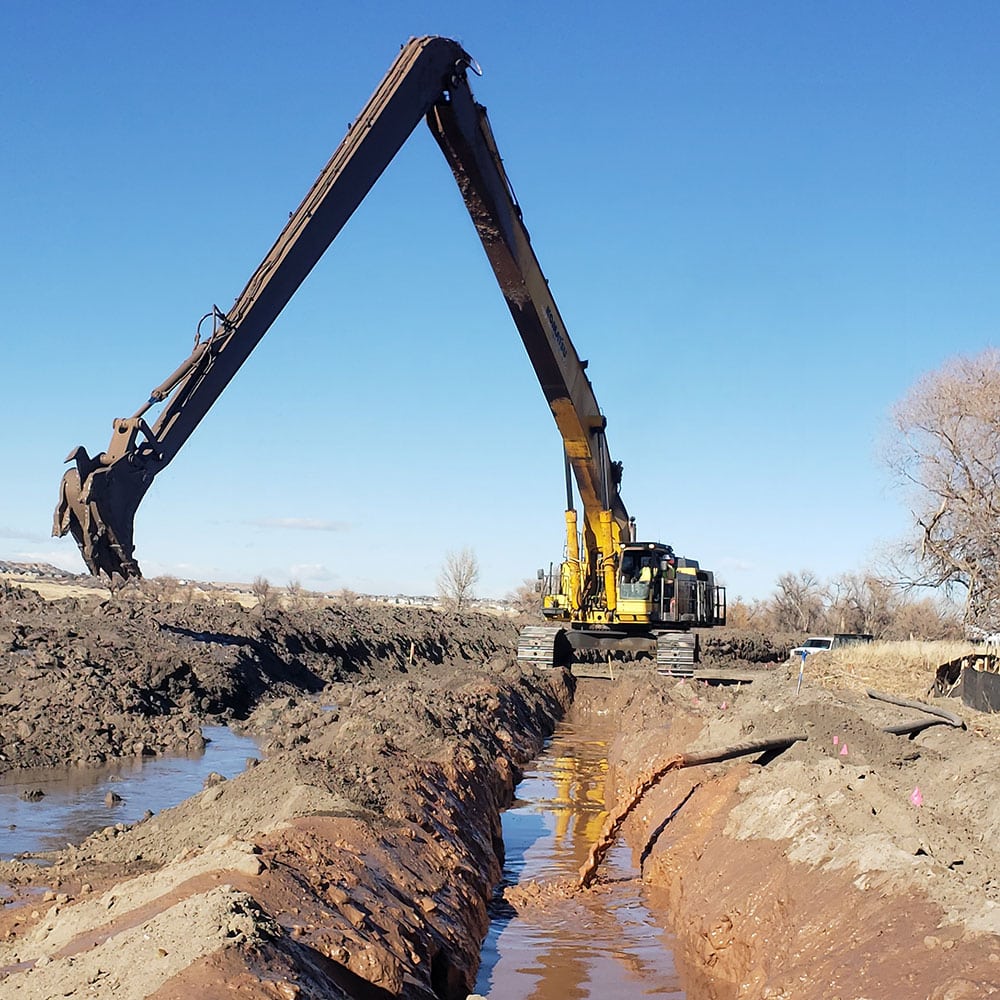Water Reservoir Groundwater Cutoff Wall Construction
Challenge
With Colorado’s water supply stressed by increasing demand from a growing population and multi-year droughts, maximizing the state’s water storage capabilities has become increasingly critical. The Cherry Creek Project Water Authority (CCPWA) formed through an intergovernmental agreement between Inverness Water and Sanitation District, the Pinery Water and Wastewater District, the Cottonwood Water and Sanitation District, and the Town of Castle Rock to assist in addressing this issue.
The CCPWA enables these local water providers located in the upper Cherry Creek Basin to partner on acquiring new water supply opportunities. To help meet their goal of reducing reliance on non-renewable ground water supplies, they purchased water rights and property intended for reservoir construction neighboring Cherry Creek near Franktown, CO to increase their surface water storage capabilities. The property featured an abandoned gravel pit containing alluvial groundwater fed by Cherry Creek.
By expanding the volume of the gravel pit and occluding the reservoir construction from Cherry Creek through the installation of a groundwater cutoff wall, the completed project would achieve CCPWA’s goal of providing the facilities required to maximize the accumulation of surface water supplies and allow for water storage of up to 2,000 acre-feet per year. The completed project would serve nearly 110,000 local residents and support state initiatives such as the Colorado Water Plan by providing a renewable, stable water supply.
Solution
Our team completed the slurry wall construction on this design-build project to limit alluvial groundwater seepage into the new reservoir to meet the SEO requirements for lining former gravel pits. After performing an initial investigation to assess site conditions that could influence this heavy civil construction project, we created our soil-bentonite mix and cutoff wall designs.
We assisted with the design by J & T Consulting and constructed our groundwater cutoff wall to meet the State of Colorado Engineers Office Criteria for the Lining of Gravel Pits intended to limit ground water leakage into reservoirs. Our team utilized two PC 1250’s Komatsu excavators equipped with extended arms and booms to construct the cutoff wall to meet the client’s schedule. The completed wall measured 3 feet wide and reached a maximum depth of 84 feet, with a length of 4850 linear feet.
Altogether, our team constructed over 347,500 square feet of slurry wall. While constructing the wall, we worked in close proximity to significant potential electrical hazards including overhead powerlines and immovable guy wires without incident.
To verify if the hydraulic conductivity of the finished Cutoff Wall met the Colorado State Engineers Office gravel pit lining criteria, we performed a 90-day Provisional Leak Test, with third party permeability testing results showing that the finished wall exhibited a hydraulic conductivity of 1 x 10-7 cm/sec, demonstrating that the inflow of unregulated ground water into the pit was less than the performance standard, meeting the acceptance criteria of the cutoff wall.
Results
Our team successfully completed the groundwater cutoff wall on schedule while meeting all project requirements set forth by The Cherry Creek Project Water Authority. The completed wall minimized the seepage of alluvial groundwater from Cherry Creek into the new reservoir and maximized the amount of surface water retained, demonstrating that the new reservoir was sufficiently lined and capable of storing water.
This geotechnical construction project supports the goals of Colorado’s Water Plan as well as The Cherry Creek Project Water Authority’s Initiatives by supplying water to the South Metro Water Supply entities to replace the use of existing deep non-tributary ground water with renewable water supplies. The constructed reservoir greatly reduces its reliance on non-tributary ground water, and the development of local supplies provides storage for a growing population, drought protection, and protection from water supply variability predicted by climate change.








